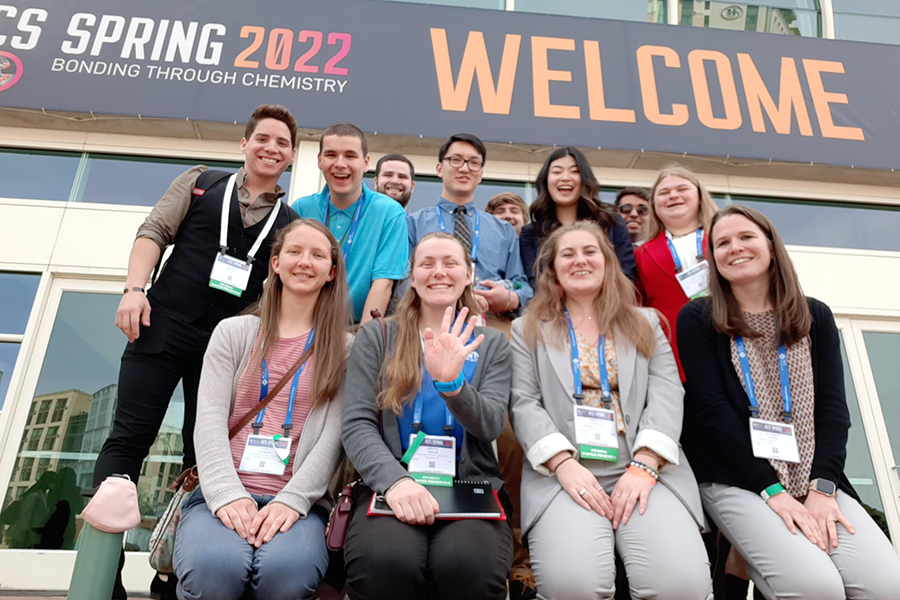Twelve Elizabethtown College students joined Associate Professor of Chemistry Thomas Hagan and Assistant Professor of Chemistry Lauren Toote at the National American Chemical Society (ACS) meeting in San Diego, Calif. in late March.
The annual ACS meeting provides an opportunity for chemists around the world to present and share their research. Students and professors spent their time at the conference attending talks and networking events, as well as sharing their research through poster presentations
“The ACS conference was a great opportunity for me to share my research with other chemists and learn about upcoming topics in chemistry around the country,” Biochemistry and Molecular Biology major Christina Schnee ’22 said. “This experience has shown me just how well Etown has prepared me to apply what I have learned in my classes to real-life interactions with scientists across varying fields within the country.”
Poster Presentations
- Detection of lead (II) in drinking water using colorimetric nanoparticles in a simple lateral flow assay design – Grace Childs ’22
- Development of a magnetic bead-based ELISA for detecting the early adaptive immune response to Lyme disease – Christina Schnee ‘22
- Synthesis of modified isoorotic acid based extended heterocyclic nucleobases capable of hydrogen bonding to the A-U base pair in double helical RNA – John Talbott ’22
- Synthesis and characterization of oxovanadium compounds as potential insulin mimetic molecules – Kaitlyn Mercando ’22
- Osmium-doped luminescent metal-organic frameworks: Synthesis and photophysical properties in solvents of varying polarity – Lucas Stehle ’22
- Synthesis of modified isoorotic acid nucleobases to compare pi-stacking and hydrogen bonding interactions in PNA:RNA2 triple helix formation – Kyle Hess ’23
- Amino functionalized extended nucleobases for triple helix formation and recognition of the A-U base pair in double-helical RNA – Emily Harding ’23
- Development of polymer nanoparticles for detection of lead (II) in drinking water – Sagar Patel ‘23 and Kyla DeWittie ‘24
- Incorporation of luminescent osmium complexes into metal-organic frameworks: Optimization of osmium complex synthesis and effect of MOF structure on complex inclusion and emission – Brandon Molina ’23
- Synthesis of photosensitizer molecules: Microwave assisted synthesis of homo- and hetero- substituted tetraphenyl-class porphyrins – Will Davis ’24
- Optimization and scale up of a 2-aminopyridine derived peptide nucleic acid monomer – Tristan Mabee ’24
- Simple and inexpensive test for detection of lead (II) in drinking water utilizing colorimetric nanoparticles – Assistant Professor of Chemistry Lauren Toote
- Disease and disability: The science and the stories: A course sitting at the intersection of biochemistry and the humanities – Associate Professor of Chemistry Thomas Hagan
About the ACS
As one of the largest scientific organizations in the world, the American Chemical Society (ACS) aims to provide scientific solutions through career exploration and community collaboration. The ACS strives to benefit the Earth and improve the way of life through the revolutionary world of chemistry.


